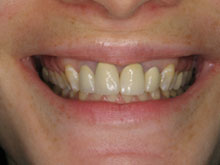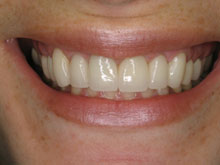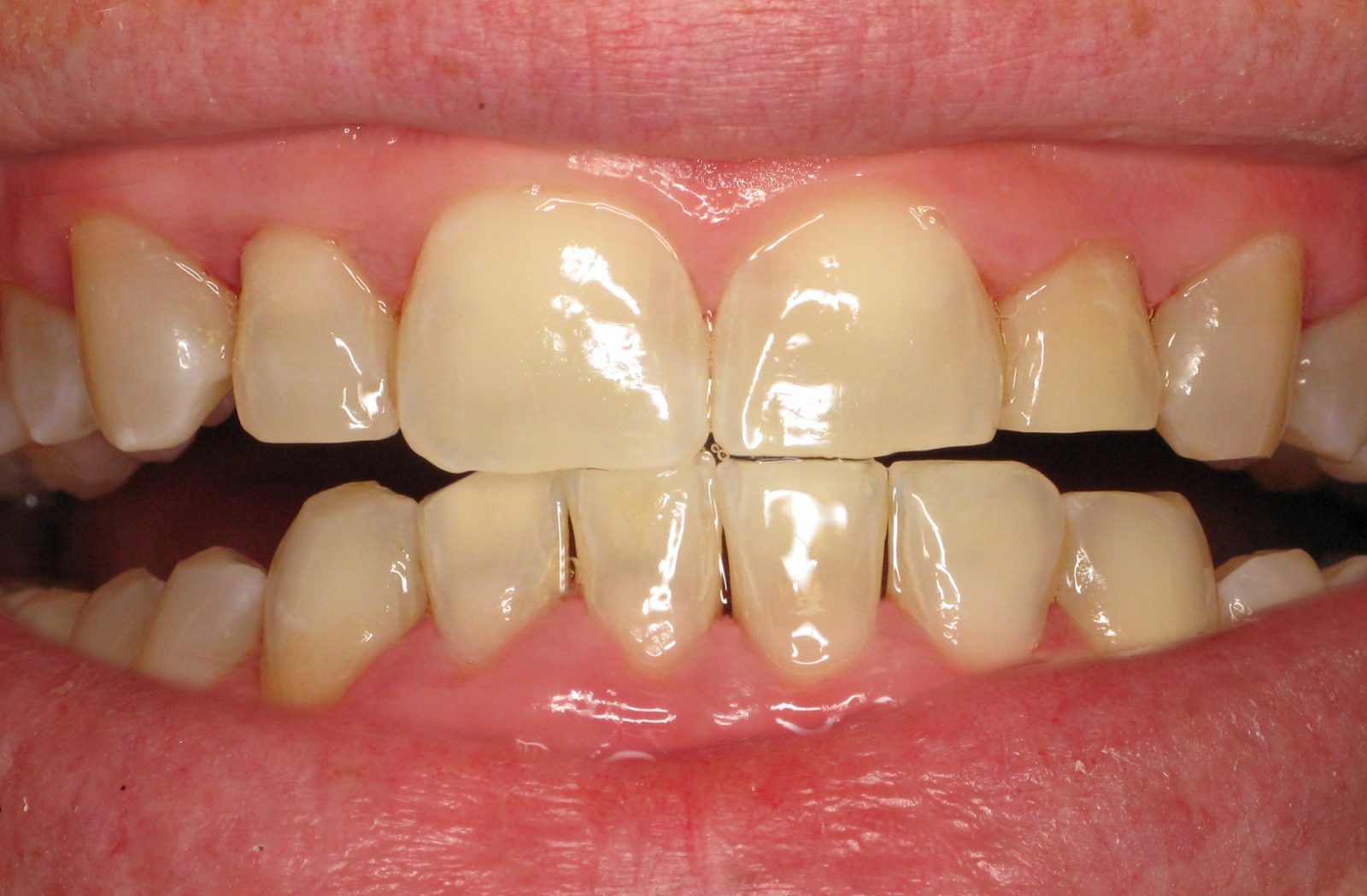Gum Disease Symptom: Bad Breath

Bad breath, medically known as halitosis, is a common and often embarrassing symptom associated with gum disease. While occasional bad breath is normal, persistent and foul-smelling breath can indicate underlying oral health issues, such as gingivitis or periodontitis.
The connection between bad breath and gum disease lies in the presence of bacteria that produce sulfur compounds, contributing to the unpleasant odor. As gum disease progresses, these bacteria can thrive in pockets between teeth and gums, leading to persistent bad breath.
Addressing the root cause of gum disease through professional dental care, improved oral hygiene practices, and lifestyle modifications is crucial for fresh breath and overall oral health. If bad breath persists, it’s essential to seek dental attention to diagnose and effectively treat any underlying gum disease and its associated symptoms.
How Does Gum Disease Cause Bad Breath?
Gum disease, whether in the early stages like gingivitis or more advanced stages like periodontitis, can contribute significantly to bad breath (halitosis). The link between gum disease and bad breath is primarily attributed to bacteria in the oral cavity and the subsequent release of sulfur compounds. Here’s a detailed explanation of how gum disease causes bad breath:
- Bacterial Growth: The mouth is host to various bacteria, some of which are beneficial, while others can be harmful. In the case of gum disease, an overgrowth of harmful bacteria occurs. These bacteria colonize on the teeth and gums, forming dental plaque, a sticky biofilm.
- Plaque Formation: As gum disease progresses, the plaque can extend below the gumline, forming pockets between the teeth and gums. These pockets create a favorable environment for bacteria to thrive, allowing them to reproduce and release byproducts.
- Sulfur Compounds: Bacteria associated with gum disease produce sulfur compounds as they break down proteins and other substances in the mouth. The most notable sulfur compounds include hydrogen sulfide, methyl mercaptan, and dimethyl sulfide. These compounds have distinct, unpleasant odors reminiscent of rotten eggs.
- Anaerobic Environment: The deepening pockets and compromised gum health in individuals with gum disease create anaerobic conditions, meaning low oxygen levels. Anaerobic bacteria, thriving in such an environment, produce sulfur compounds as part of their metabolic processes.
- Persistent Inflammation: Gum disease is characterized by inflammation of the gums due to the body’s immune response to bacterial presence. The combination of bacterial activity and ongoing inflammation contributes to the release of malodorous compounds.
- Tooth Decay and Gum Recession: In advanced stages of gum disease, tooth decay and gum recession may occur. Decaying teeth and exposed tooth roots provide additional surfaces for bacterial colonization and produce foul-smelling compounds.
- Poor Oral Hygiene: Inadequate oral hygiene practices, such as irregular brushing and flossing, contribute to plaque buildup and exacerbate the conditions conducive to bad breath. Poor oral hygiene allows bacteria to proliferate and create an environment where the sulfur compounds thrive.
Addressing bad breath associated with gum disease requires comprehensive dental care. Professional cleanings, scaling and root planing, and diligent oral hygiene practices are essential in eliminating bacterial sources and improving gum health. Individuals experiencing persistent bad breath should seek dental evaluation to identify and address any underlying gum disease, ensuring fresh breath and optimal oral well-being.
What role do bacterial plaque and tartar buildup play in causing bad breath?
Bacterial plaque and tartar buildup in the oral cavity contribute to bad breath or halitosis development. Understanding how these elements interact with bacteria and oral tissues provides insight into their role in causing persistent unpleasant breath:
- Plaque Formation: Plaque is a soft, sticky film that forms on teeth surfaces throughout the day. It comprises bacteria, saliva, and food particles. If not regularly removed through proper oral hygiene practices, plaque accumulates and adheres to the tooth surfaces, especially along the gumline.
- Bacterial Colonization: Plaque is a breeding ground for various bacteria, including beneficial and harmful strains. As bacteria multiply within the plaque, they metabolize the sugars and carbohydrates in the mouth, producing acids and releasing byproducts.
- Sulfur Compound Production: Harmful bacteria within the plaque initiate the breakdown of proteins, producing sulfur compounds as byproducts. These sulfur compounds, such as hydrogen sulfide and methyl mercaptan, are known for their foul smell, contributing significantly to bad breath.
- Gingival Inflammation: Plaque accumulation along the gumline can lead to gingivitis, the early stage of gum disease. The presence of bacteria triggers an inflammatory response in the gum tissues. Inflamed gums are more prone to bleeding and can release additional sulfur compounds, intensifying the odor.
- Tartar Formation: If plaque is not consistently removed through brushing and flossing, it can mineralize and harden into tartar (calculus). Tartar provides a rough surface for bacterial adherence, making it more challenging to eliminate through regular oral hygiene practices.
- Deepening Periodontal Pockets: In advanced stages of gum disease, tartar buildup contributes to the formation of deep periodontal pockets between the teeth and gums. These pockets become a sheltered environment for anaerobic bacteria, thriving in low-oxygen conditions and further intensifying the release of sulfur compounds.
- Bacterial Persistence: Unlike plaque, which can be managed with proper oral care, tartar requires professional intervention for removal. As tartar persists, it provides a continuous source of bacteria contributing to bad breath, even if an individual practices good oral hygiene.
- Systemic Effects: The bacteria and sulfur compounds released by plaque and tartar can enter the bloodstream, potentially affecting systemic health. Systemic conditions, medications, and lifestyle factors may also influence saliva production, impacting the mouth’s ability to naturally cleanse and neutralize odorous compounds.
Addressing bad breath caused by bacterial plaque and tartar buildup involves a combination of professional dental care and consistent oral hygiene practices. Professional cleanings, scaling and root planing, and personalized oral care instructions help eliminate the bacterial source and promote optimal oral health, ensuring fresh breath and preventing the progression of gum disease and associated complications.
How do poor oral hygiene practices lead to bad breath associated with gum issues?
Inadequate oral hygiene practices are crucial in developing bad breath associated with gum issues. When individuals neglect regular and effective oral care, bacterial plaque accumulates on tooth surfaces and along the gumline. This plaque becomes a breeding ground for bacteria without proper removal through brushing and flossing. The bacteria within the plaque metabolize leftover food particles, releasing foul-smelling sulfur compounds as byproducts.
Additionally, poor oral hygiene contributes to the formation of tartar, a hardened form of plaque that adheres to teeth. Tartar harbors bacteria and provides a rough surface for further plaque accumulation. The gums may become inflamed as these conditions persist, leading to bleeding and deeper periodontal pockets. In these pockets, anaerobic bacteria thrive, intensifying the production of malodorous compounds. The culmination of inadequate oral care, bacterial overgrowth, and persistent inflammation contributes to bad breath associated with gum issues.
Consistent and thorough oral hygiene practices and professional dental intervention are essential to eliminate the bacterial source and promote optimal gum health, ensuring fresh breath and preventing the progression of gum disease.






